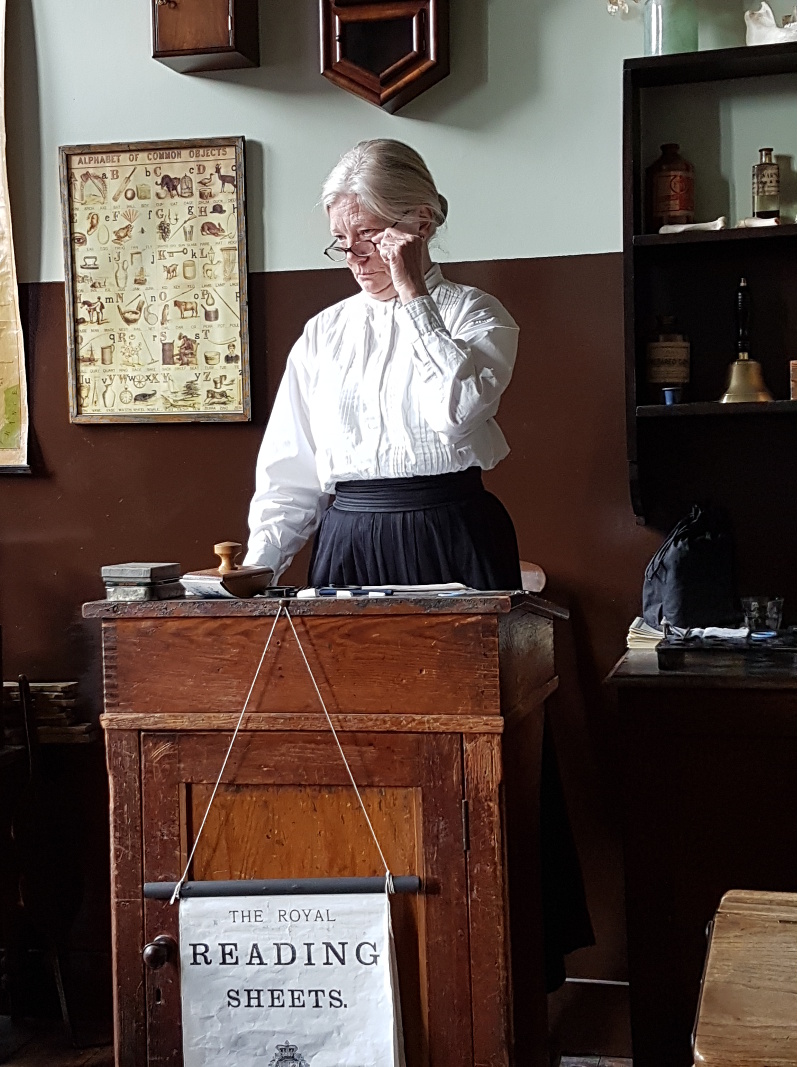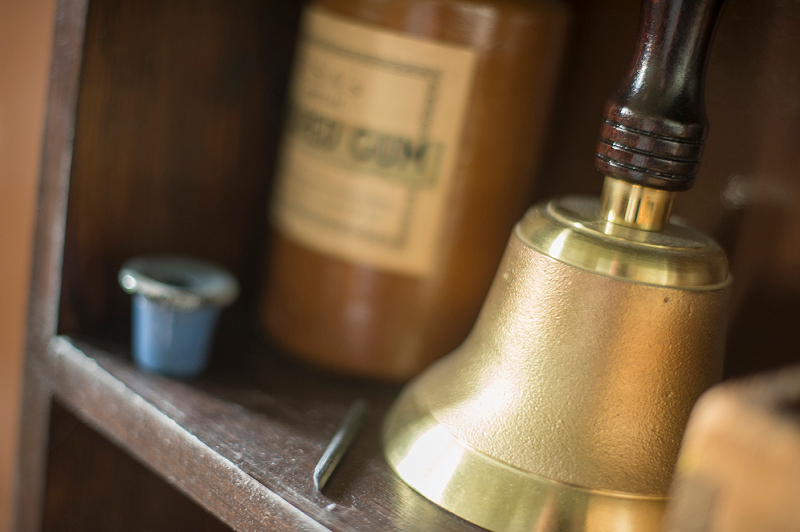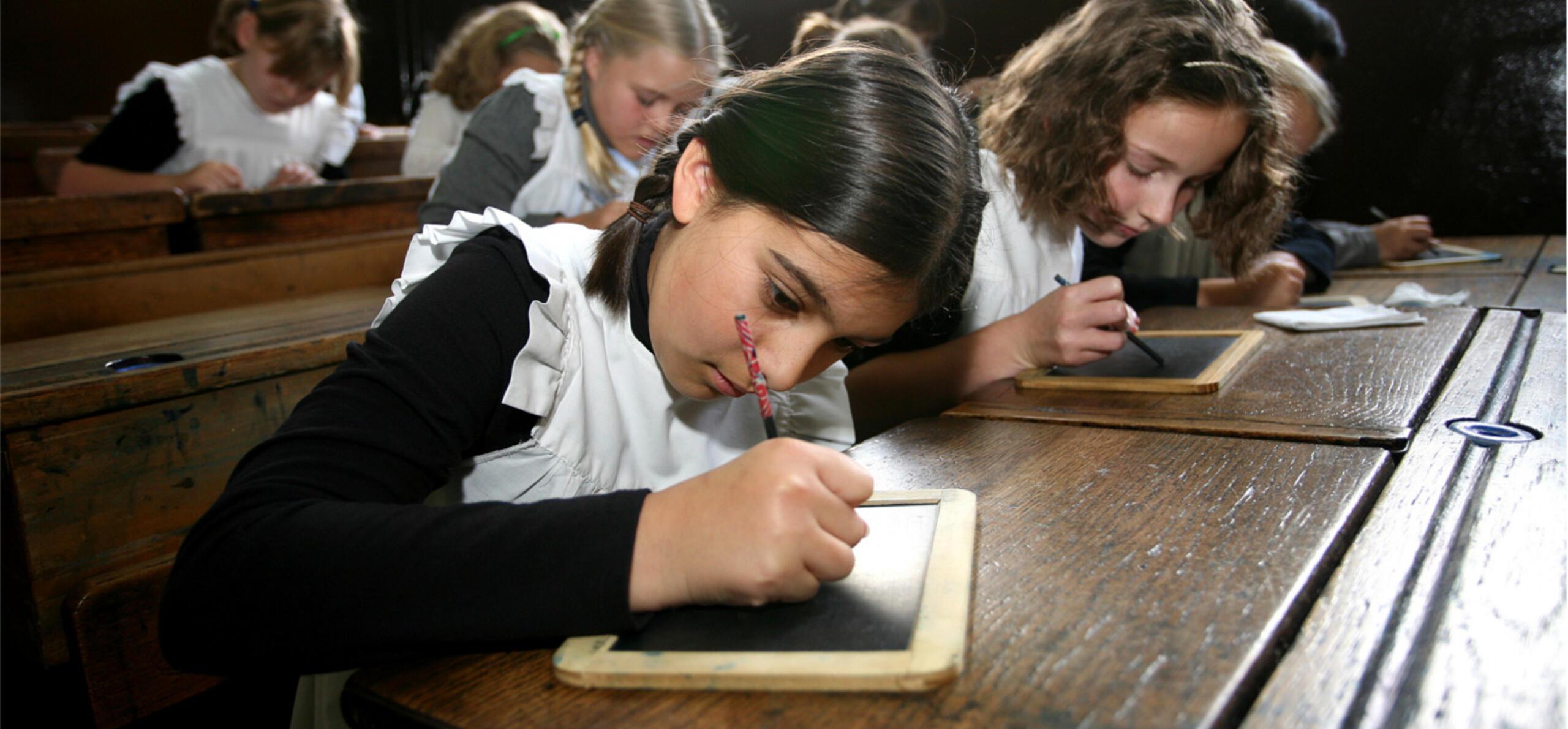Sandra Gough is a fantastic Session Leader who has worked at Reading Museum for a long time. She loves delivering many of Reading Museum’s Sessions but her particular favourite is the Victorian Schoolroom Experience. She is very petite woman but forms a very formidable School ma’am (letting the children know, it’s just a character, dropping in and out as necessary!).
With the onset of the ‘Victorian Schoolroom Launch: Teacher’s Event’ in September we asked Sandra to tell us a bit about why she enjoys teaching this session so much.

Sandra Gough: Session Leader
‘I should hear nothing, but the ticking of the clock’
I once told a shop assistant that I dress up as a Victorian for money and carry a cane. She looked astonished, as I had neglected to tell her that I worked at Reading Museum and was dressed as a Victorian teacher. I’m not sure what she thought of me before the explanation.
Many years ago, when the Museum Schoolroom was based in Katesgrove School, my children were both lucky enough to have the Victorian School Room experience. I went with them, as a supporting parent and from then on I had my eye on the job of Victorian School ma’am.
The Victorian Schoolroom session is carried out in two parts; the introduction and the immersive hour long experience in the authentically furnished and decorated school room. During the introduction, we talk about the tremendous changes that took place in the Victorian era. For the purposes of this session these changes culminate in the introduction of free schooling for all in 1891, with the aim of having a literate and numerate workforce. The schoolroom itself is setup as it would have been in 1893. The children have the opportunity to dress up, if they are not already in Victorian costume.
I try hard to emphasise that we are all acting, once we step back in time and that no matter how harshly I look at them it is all pretend. There are occasionally children who forget the ‘pretend’ aspect and need to be swiftly moved to sit next to a more comforting adult. Here, the session is adapted to suit Key Stage One and Two.

School Bell
The closed doors of the schoolroom, with blinds down, ensure that when we all walk into the room we are walking back in time. In height order the line of boys is marched into the room, followed by the girls. ‘Cast your eyes to the front and remain standing.’ I am now in full flow, commanding the room and expecting silence and full attention. ‘Good morning scholars’ and the children are encouraged to answer ‘Good morning Ma’am,’. We say our morning prayer and then sing All Things Bright and Beautiful. The register is called, with the scholars standing to answer ‘Present Ma’am.’ A hand inspection is next, with the adults often being berated for wearing hand adornments. We move on to a short sample arithmetic lesson, adding pounds, shillings and pence. While the children are concentrating on using slate boards and pencils, I will move around the room, reminding them of the need to work hard for their future employment prospects in one of the factories in the town. This includes Simmonds, the brewery, although I tell them, ‘I myself am a member of the Temperance Society and do not imbibe strong liquor.’ The language used in the schoolroom is appropriate for 1893. I try to correct any older left handed children, stating that ‘We do not tolerate left-handedness’.
We move on to a short reading lesson, a drill, then writing in copybooks with dip pens and ink. As the pen or book monitors move along the rows of desks, the rest of the scholars learn some homilies and mnemonics, ‘Good better best, never let it rest, till your good is better, and your better best.’ The lessons are carried out in silence. ‘I should hear nothing, but the ticking of the clock.’

Skull
When the copybooks have been collected, a previously primed girl will be asked to step forward. A suitably blotted copybook, usually belonging to someone else, will be held up. ‘However, Ethel, you may redeem yourself if you can recite the first verse of the 23rd psalm.’ After an awkward silence: ‘ It is apparent that you, child, have been inattentive in your scripture lessons and, what is more, have not attended Sunday School.’ The girl is placed on the dunce’s stool, wearing the dunce’s cap. Having been reminded what the 23rd psalm is, she is told that she will write it out 10 times with her dip pen after school.
We have a short history lesson, followed by some geography, vexillology* and hagiography*!
‘This brings us to the end of our lessons. However, there remains a boy to be punished’. The previously primed boy is accused of kicking a ball though the headmaster’s window and is given three strokes of the cane. If caught right the sound of the cane on a long black skirt is quite realistic! At this point any gigglers find it almost impossible not to laugh, although there are always a few who believe the child has been caned.
We finish with a prayer and a 5 to 1 countdown to the current year. We now have time for photos and questions. The children have the chance to use the finger stocks and back straighteners. We discuss why the windows are on the left of the room, why the walls are brown, how the lights were powered etc.
I have fun dressing up and stepping into a different era. I hope the children and adults do too.
*Vexillology – The study of flags
* Hagiography – Writings of the lives of Saints.





